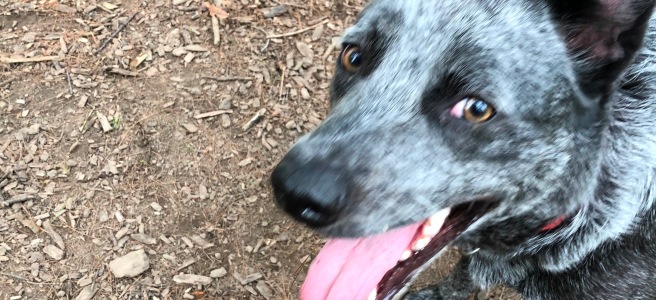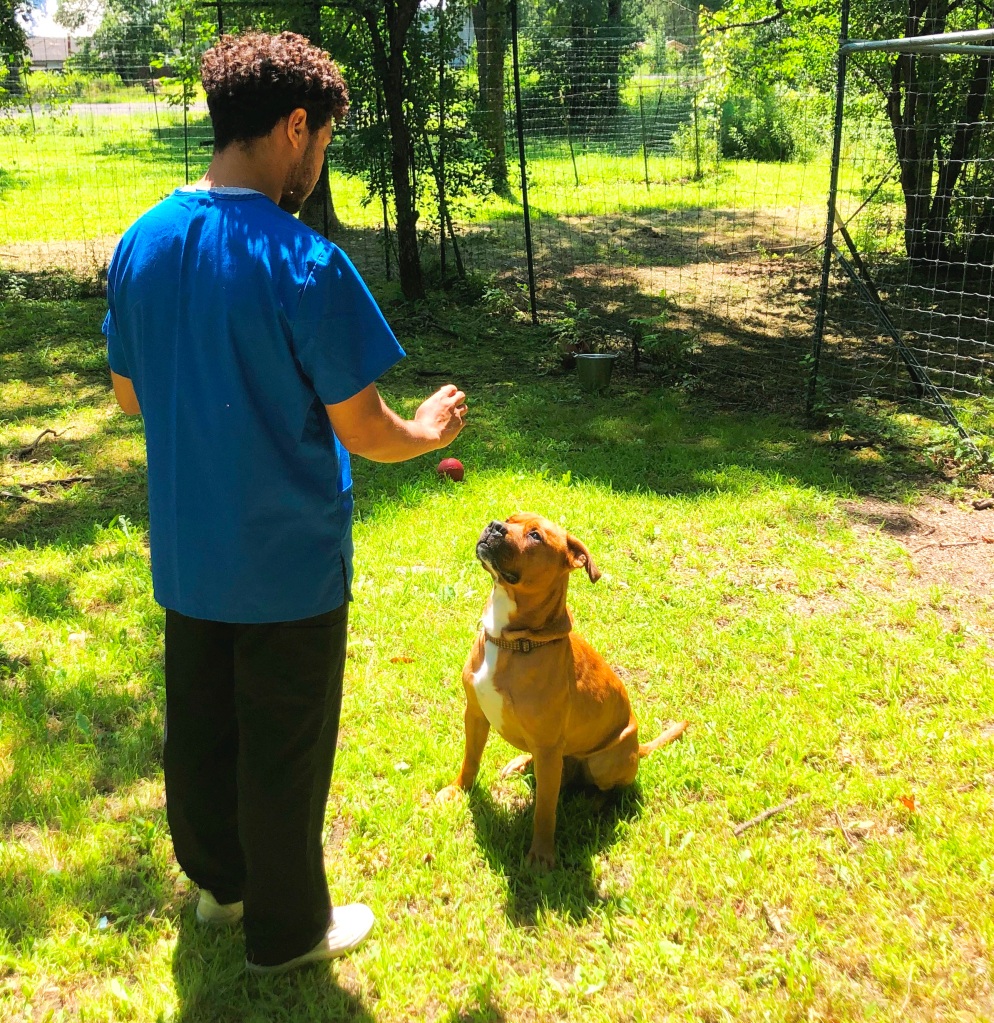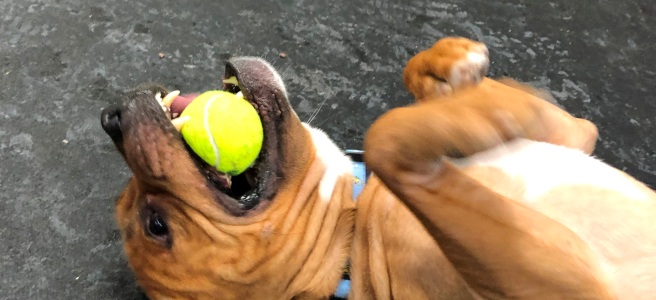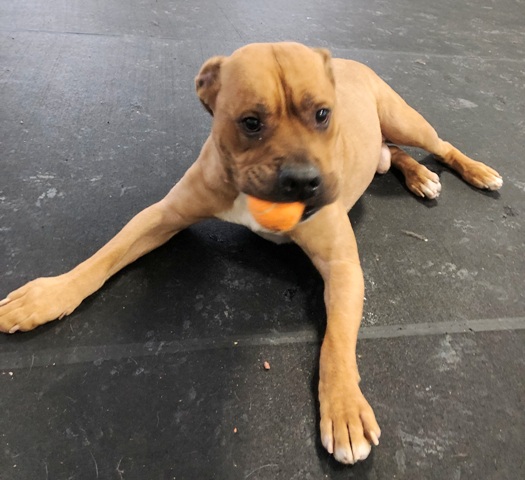One of the things about working with shelter dogs, and there are a lot of “things,” is that when I work with a dog for a while and they get adopted, I’ve gotten used to the behaviors they exhibited in our end game: a reliable sit, waiting at doors, no jumping on me, no trying to charge out the kennel door when I’m coming in or going out. I’ve helped them become a dog someone wants to bring home, and off they go.
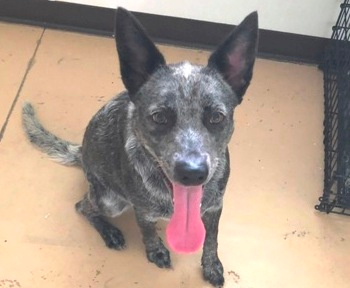
Dorito, a deaf cattle dog, was alert and attentive from the first day I met him, pictured here. He also jumped, grabbed at clothing, went bonkers if you reached for him, spun and darted and dashed when he was on leash, and was earning the reputation of being an all-around brat. But over the course of 7 sessions in 4 weeks, he learned hand signals for sit, down, touch, come, look. And he made up a variant of kick-ball fetch that showed just how smart he was – he’d retrieve the ball, bring it to the top of a slope and let it roll down to me. If he saw it wasn’t going to get right to me, he’d run to it, correct its course and go back to the top of the slope. Over time, he went from a bundle of behavior problems to a joy and was adopted by a family who knew his breed. He went home with them to become part of a trio of family dogs.

While I was still working with Dorito, I began working with Mowgli. When I met him, Mowgli presented a big challenge at his kennel door – whether you were going in or trying to leave, he scrambled to get out. As it turns out, a big dog can get themselves into narrow spaces, and Mowgli was skilled at pushing his way through.
But out in the play yard, he chilled to the point of being aloof. It was clear that people were just his ticket to get outside – hanging out with you was not on his agenda at all. He didn’t play games, he didn’t sit or come when called, and “wait” wasn’t an idea he’d ever come across. But he learned it all, including stellar manners when you’d get him or return him to his kennel. After months at the shelter, he was adopted.
Even though I didn’t work with Dorito for nearly as long as I’ve worked with other shelter dogs, they were such intense sessions – and I spent so much time researching how to work with deaf dogs – that it seems we must have met for many more times. Mowgli I did work with many more times – 29 visits over 4 months.
Working with shelter dogs like this is a time commitment, it’s an emotional commitment, and it takes up a lot of mental bandwidth. After a year and a half and over thirty dogs, with about half that number being individuals I worked with at a pretty intense level, I’ve learned an essential truth about working with shelter dogs – there will always be another dog to work with. So the dog I’ve intentionally formed a bond with exits my life, and I start on building a bond with a new dog.
The contrast between the dog that just found a home and this new dog can be pretty stark. To be honest, it can be a challenge to make the shift – I need to set my expectations back to zero and build from there based on my observations. It can be discouraging when a new dog seems a very long way from showing the kind of behaviors that will help them get adopted. I have to remind myself what a whirling dervish Dorito could be, how aloof Mowgli was when I met him, how aggressive Gils’ greeting behavior could look, how timid Karen and Buddy were. It was work to get them to a good place, and it’s going to be work to get this new dog there, too.
Sometimes when I’m starting up with a dog, I stand outside their kennel and look at them barking at me, or throwing themselves against the kennel door, or backing away as though I am one scary being, and for just a second, I think, “Seriously? From scratch, again?” And then I see this new dog as an individual. I watch them and start figuring out how we’ll start. I put my foot sideways in front of the kennel door to block it from swinging out and hitting me when I unlatch it, and head in. It is a new day, a new dog. Game on.


